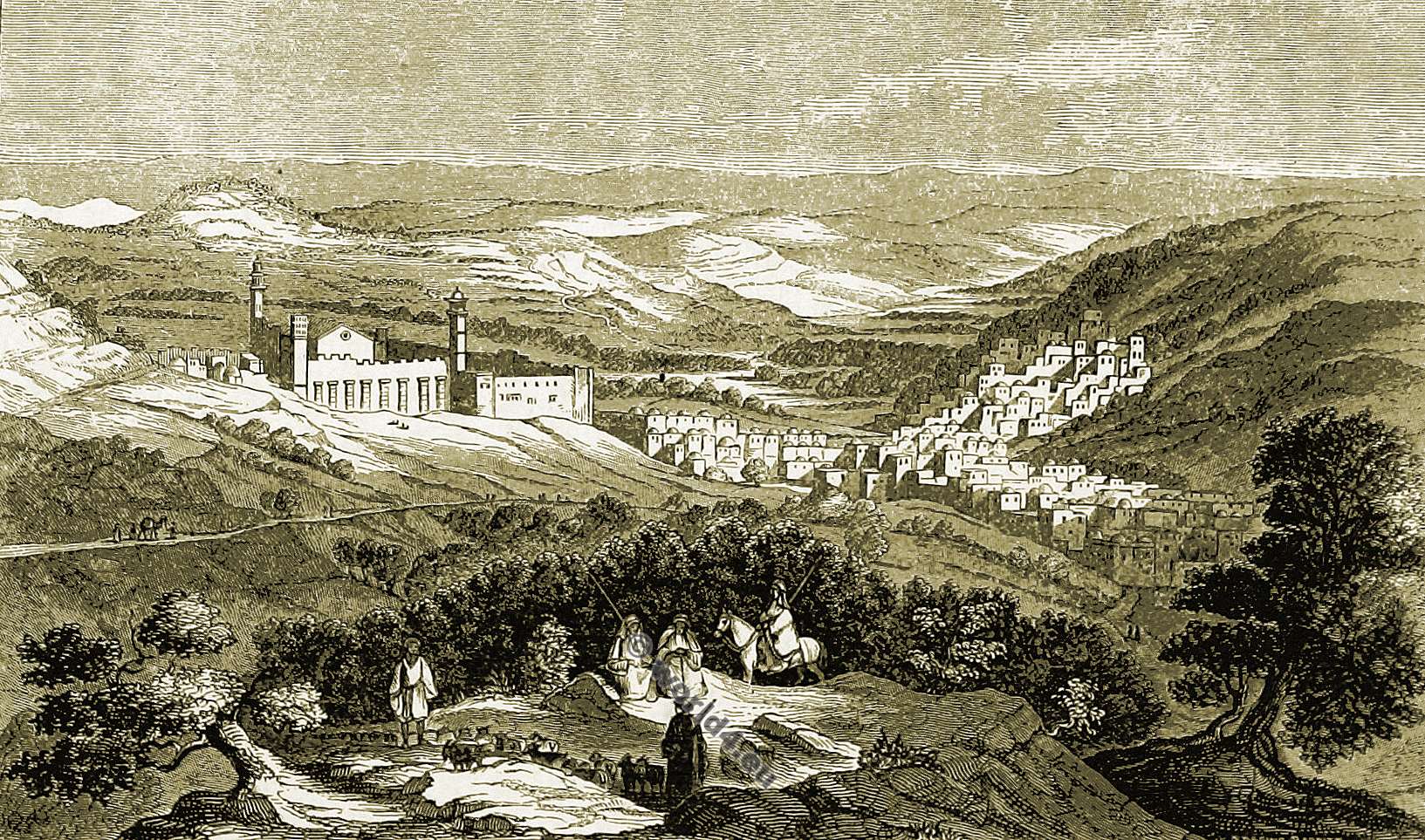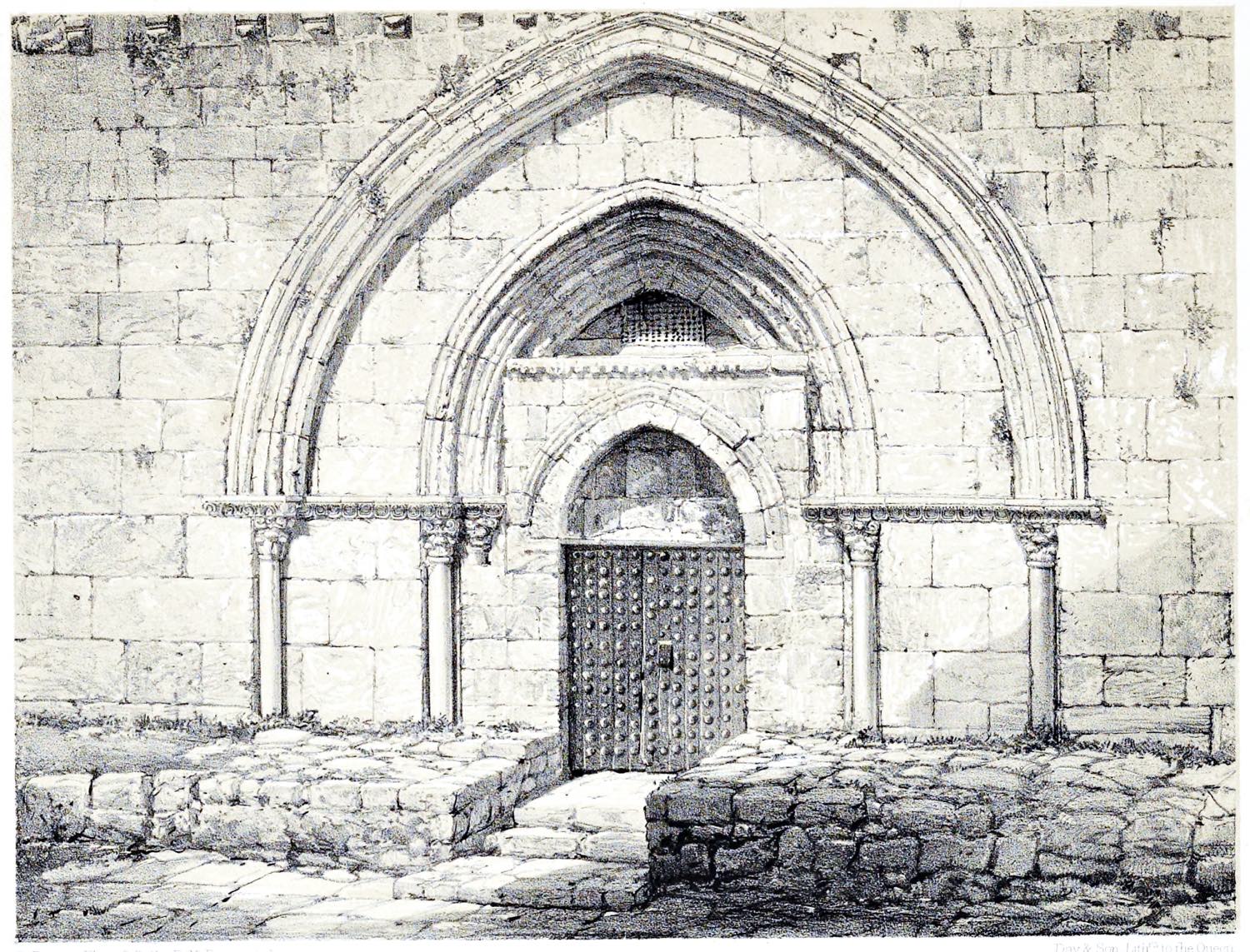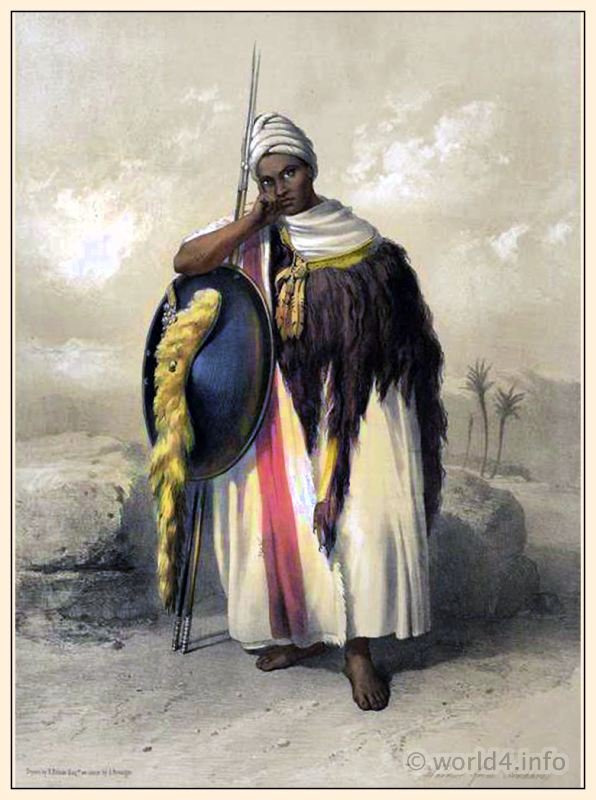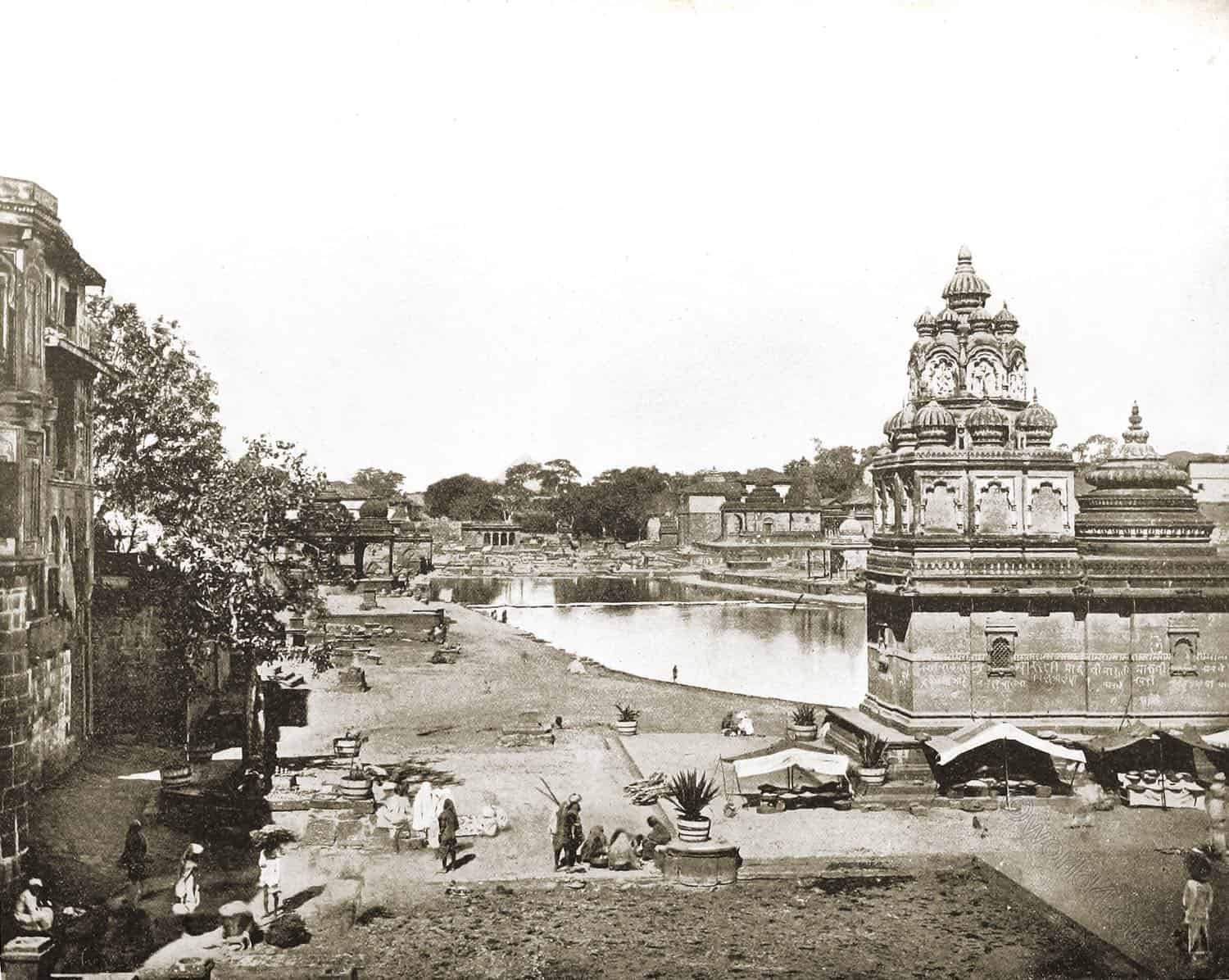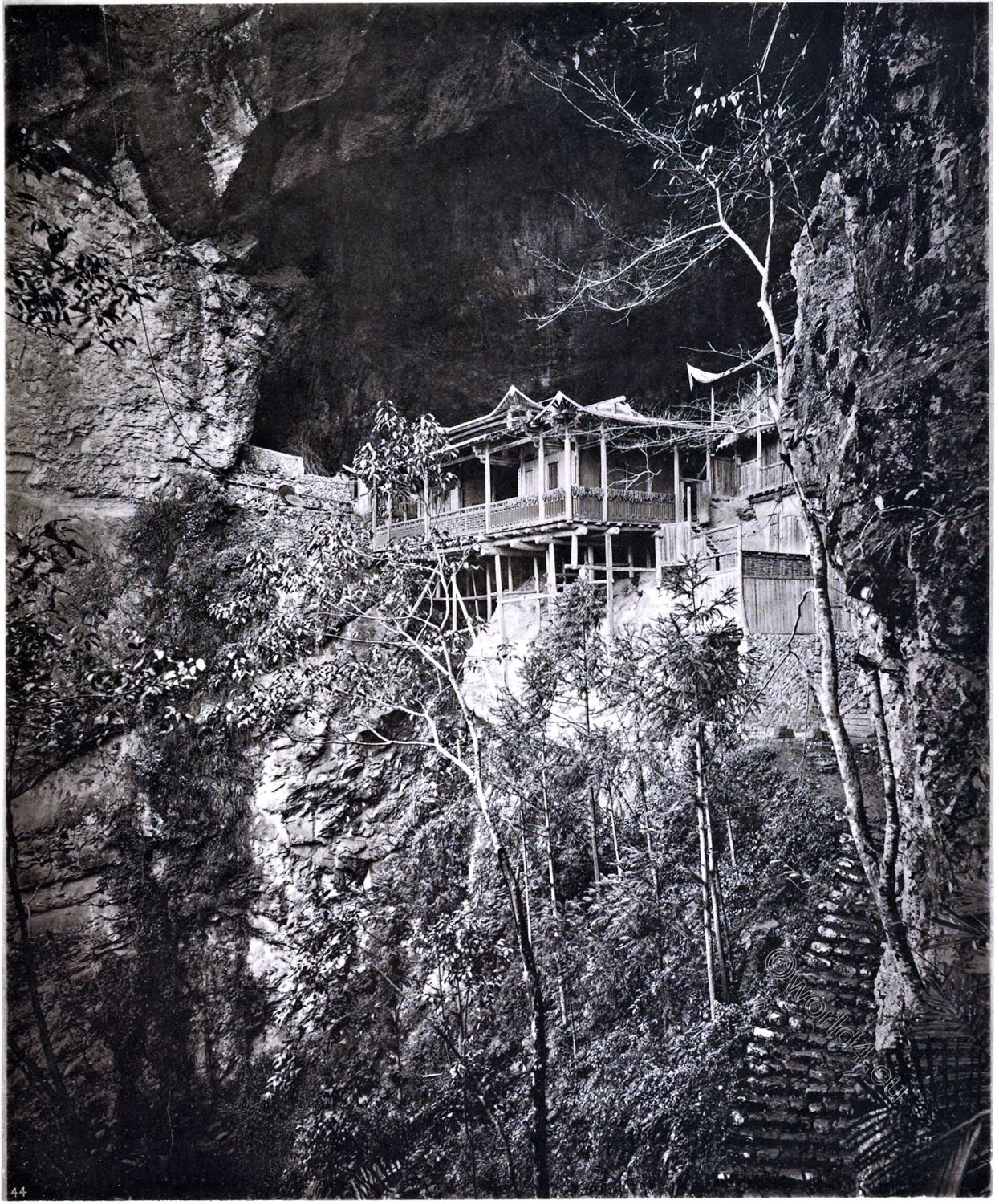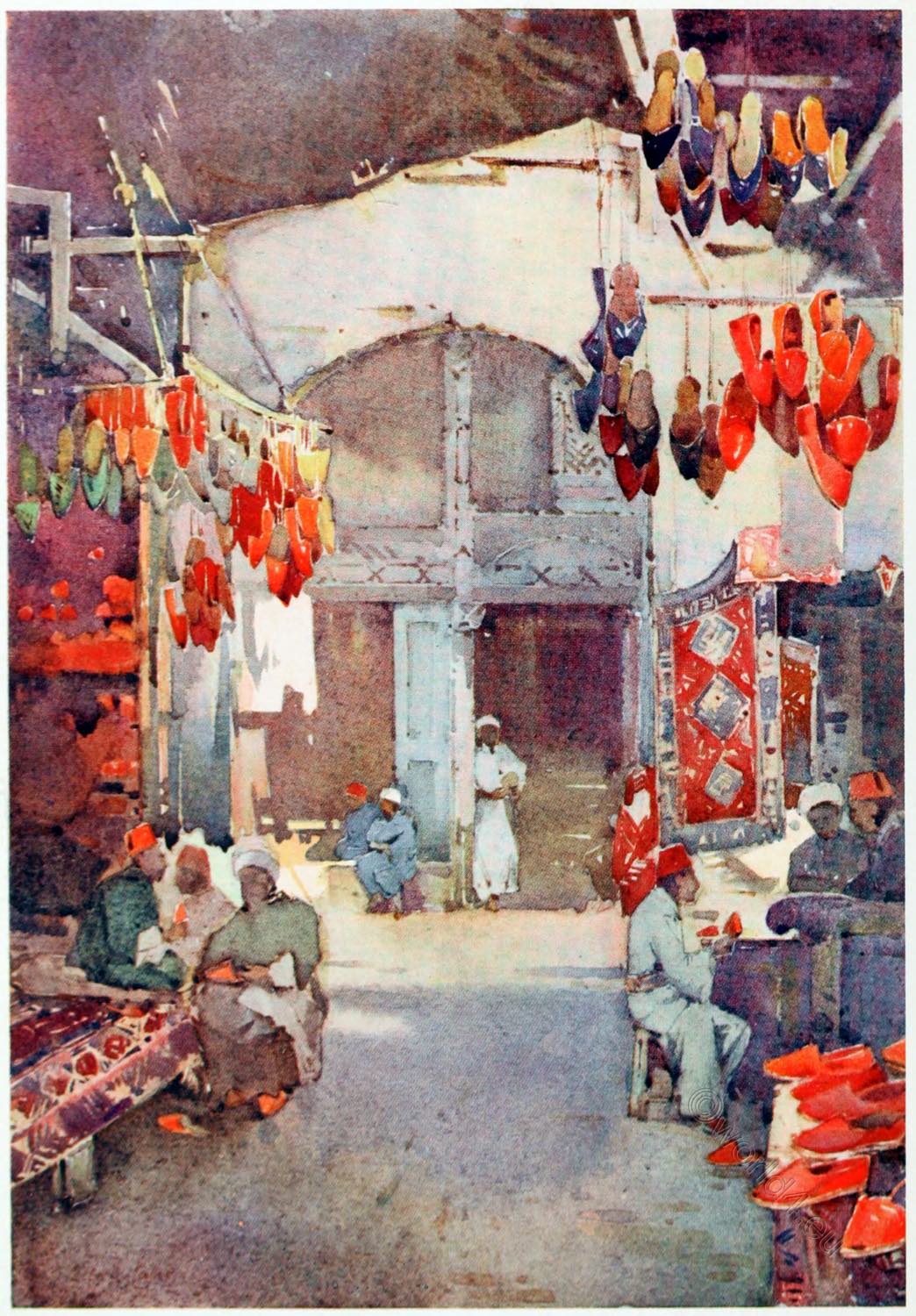Hebron and the monument over the Cave of Machpelah.
The cave of Machpelah (Hebrew מערת המכפלה, Me’arat HaMachpela, translated “Cave of the Double Tombs”), also Cave of the Patriarchs or grave of the Patriarchs, in Hebron is an important site of Judaism.
In their are the resting places of the three patriarchs Abraham, Isaac, Jacob and their wives Sarah, Rebecca and Leah. The current buildings were created by King Herod in the 1st century BC., and was supplemented by the Crusaders in the 12th century. The first expansion took place in the 6th century, among other things, to separate Jewish and Christian pilgrims. At least since the early 10th century, a mosque was built in the complex, including a mihrab in the south-east wall.
During the First Crusade Machpelah was conquered in 1100 by Godfrey of Bouillon, first King of Jerusalem, and placed under the rule of the Crusaders and established an Augustinian monastery. In 1119 the bones of the Patriarchs were found under the pavement of the Herodian court and shaped in reliquaries. The Egyptian Sultan Saladin conquered in 1187 Hebron, confiscated the cathedral and declared it into a mosque.
One of his successors, the despot Baibars, destroyed in 1266, however, the non-Islamic life in Hebron. Jews and Christians were forbidden to entry their holy place. By the end of the 19th century no Jews and Christians were allowed to visit the shrine, even after only a few exceptions for famous Europeans were made. During the Six-Day War Israel freed on 8 June 1967, the city of Hebron from the Jordanian occupation and made them Jews again accessible.
The place also applies to Islam as a sacred place, because Abraham is considered as a progenitor, and it houses a sacred mosque, also known by Muslims as the Sanctuary of Abraham or the Ibrahimi Mosque (Arabic: al-Haram al-Ibrahimi, الحرم الإبراهيمي)
Source: Oriental and Sacred Scences, from notes of travel in Greece, Turkey and Palestine by Howe Fisher. Published 1854.
Related
Discover more from World4 Costume Culture History
Subscribe to get the latest posts sent to your email.

